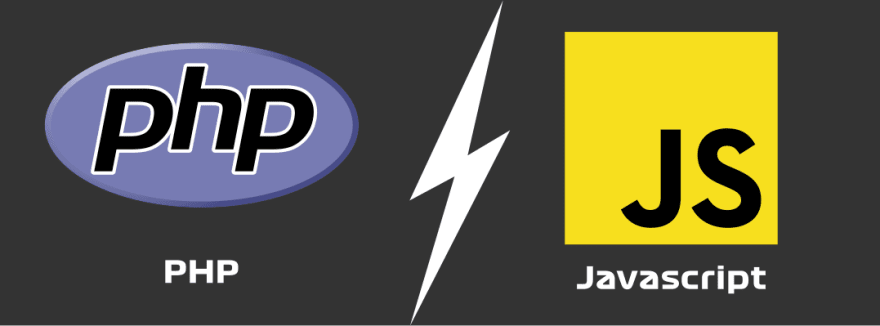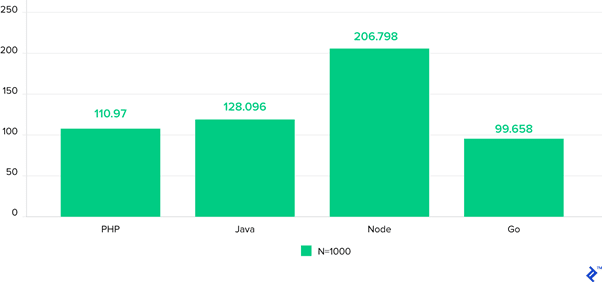PHP & JavaScript Both Are Scripting Languages Used by Web Developers. They Can Do Some of the Same Things, but There Are Some Important Differences.

PHP & JavaScript are both popular scripting languages used for web application development. PHP & JavaScript aren't new players within programming languages—they’ve been popular for a long time and are the backbone of numerous websites.
Both PHP and JavaScript are scripting languages as opposed to pure programming languages like C++ or Java. In other words, they are interpreted and not compiled, which means they're translated into machine code via an interpreter that executes the code.
PHP vs JavaScript – Its Origin
Invented by Danish-Canadian programmer Rasmus Lerdorf, PHP is an open-source scripting language that was initially a set of different scripts Rasmus used for tracking visits on his website, called Personal Home Page Tools. Later, with the release of PHP 3.0, PHP became an abbreviation of "PHP: Hypertext Preprocessor," and is now the most widely used open-source scripting language, used by many web developers around the globe for server-side scripting.
On the other hand, JavaScript, abbreviated as JS, is the invention of Netscape programmer Brandan Eich. Initially, it was called Mocha, then quickly renamed to LiveScript and then later JavaScript.
Along with HTML and CSS, JavaScript is a core technology used for rendering webpages on the World Wide Web (WWW). It's widely used in websites for client-side page behavior. In fact, it’s difficult to find a website that doesn’t use JavaScript in some way.
PHP vs. JavaScript – Which Is More Popular?
Let’s start by comparing Php vs. JavaScript usage for server-side programming:

Both are popular languages, but PHP is significantly more popular (in large part due to the popularity of WordPress). According to W3Techs, PHP is used by around 79% for websites as the server-side programming language. In contrast, only 0.7% of websites use JavaScript for server-side programming.
However, when it comes to websites that use a client-side scripting language, no one can beat JavaScript. According to a technologies overview by W3Techs.com, JavaScript is the top language--used by more than 90% of all websites.
PHP vs JavaScript – What They Are Used for
PHP and JS (JavaScript) are both interpreted scripting languages released respectively in 1994 and 1995. Both were mainly created for web development purposes, but both are also used as a general-purpose scripting language. Both PHP and JavaScript (when used server-side) connect to different types of databases like PostgreSQL, Oracle, and MySQL.
Many of the most popular open-source software and plugins are written using PHP. For example, WordPress, Magento, and Drupal CMS and their associated plugins & extensions all use PHP. PHP is only used for server-side scripting.
On the other hand, JS can be used as a full-stack (front-end and back-end) or used for front-end functionality and paired with another back-end programming language such as PHP. So if you want, you can use JavaScript for your entire website or use it in combination with another language.
PHP vs JavaScript – Server & Client-Side Scripting
Put simply, PHP is server-side scripting language that runs on the webserver instead of the client machine. In other words, PHP works in the website backend, where it’s not visible to the user.
Server-side code is often used to deliver dynamic content that's stored in a database, for instance, displaying "Hello Nick" when a user named Nick logs in. Another example is e-commerce, such as numerous WooCommerce extensions that connect through APIs for different payment providers to complete transactions.
On the other hand, JavaScript is a client-side scripting language that usually runs in the user’s browser. Some classic examples where you can witness JavaScript usage are an accordion or toggle, part of a FAQ page where you click or tap on any question to see the answer. In this case, JavaScript handles the toggle of CSS display properties to show the hidden content.
While JavaScript is most commonly used for client-side scripting, it can also be used for server-side scripting with NodeJS. Server-side JavaScript is a newer trend, but it’s growing each year in popularity.
PHP vs JavaScript – Database Integration
PHP is known for integrating with databases thanks to its roots as a popular web development language. It can integrate flawlessly with MySQL and MariaDB databases which are commonly offered by WordPress and respectable secure hosting providers. Further, many different PHP frameworks offer easy integration with databases, including protection against SQL injection and other security threats.
JavaScript originally didn’t have database integration because it was a client-side language. But it has changed over time, and with nodeJS, JavaScript developers can integrate with many different databases.
PHP vs JavaScript – Performance
Which language is faster—PHP or JavaScript? Well, unfortunately, the answer is: it depends.
NodeJS is known for non-blocking I/O, while PHP outperforms in some CPU-bound tasks.
For example, Brad Peabody ran some benchmark tests that are interesting examples. Let’s take a look at two of them.
In this first image, we see the time taken when running 1,000 SHA-256 hashes:
As you can see, PHP significantly outperformed Node (and even beat Java). But when he ran a benchmark measuring how many requests per second each language could handle, JavaScript/NodeJS clearly beat PHP:

For most small websites and applications, though, both PHP and JavaScript are more than powerful enough to do the job needed.
PHP vs JavaScript – Side by Side Comparison Table
Let's go through a side-by-side comparison and see how PHP & JavaScript differ from each other.
| PHP | JavaScript | |
| Language Type | PHP is a server-side scripting language. | JavaScript is a client-side scripting language that can also be used for backend code with nodeJS. |
| Developed By | Rasmus Lerdorf developed PHP in 1994. | Brendan Eich developed JavaScript in 1995. |
| Usage | It's a server-side scripting language used for the backend of the website. | Presently it's a full-stack programming language that you can use for both the server and client-side. |
| Database Integration | Integrates with many different databases like MySQL or Oracle. | NodeJS offers database integration. |
| Syntax | The PHP code is written within Tag. | JavaScript code (when used client-side) is written within tags ... |
| Concurrency | By default, PHP is a synchronous single-threaded language, but libraries are available to do concurrency. | JavaScript (NodeJS) is an asynchronous language by default. |
| File Extensions | ".php" extension is used to save PHP files. | Extension ".js" is used for JavaScript file. |
| Framework | Popular frameworks for PHP include Symfony, FuelPHP, Laravel, CakePHP. | Popular frameworks for JavaScript include React, Vue.js, Meteor, Angular, etc. |
| Code Availability | PHP can't be viewed by the user as it runs on the server-side. | It's possible to view JavaScript directly when it is used client-side. |
| Case Sensitive | Partly case sensitive. | Entirely case sensitive. |
| Variable Declaration | Variable is declared using $ prefix. | Variable is declared using keywords var or let. |
| Arrays | PHP provides associative arrays. | JavaScript doesn't support associative arrays. |
| Package Managers | Uses Composer and PEAR package managers. | Uses Browser, Yam, and npm package managers. |
| Usage | More than 80% of websites use PHP for the backend. | Most websites use JavaScript in the frontend. And some websites also use NodeJS for the backend. |
| Example | Websites that are built-in PHP include Tumblr, MailChimp, iStockPhoto, WordPress. | Over 95% of websites use JavaScript in some way. |




Top comments (0)